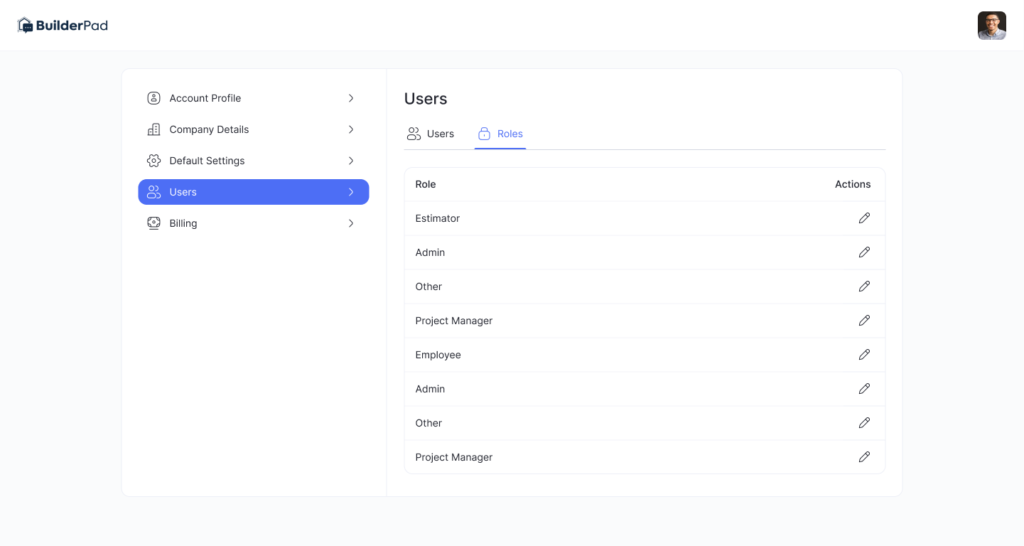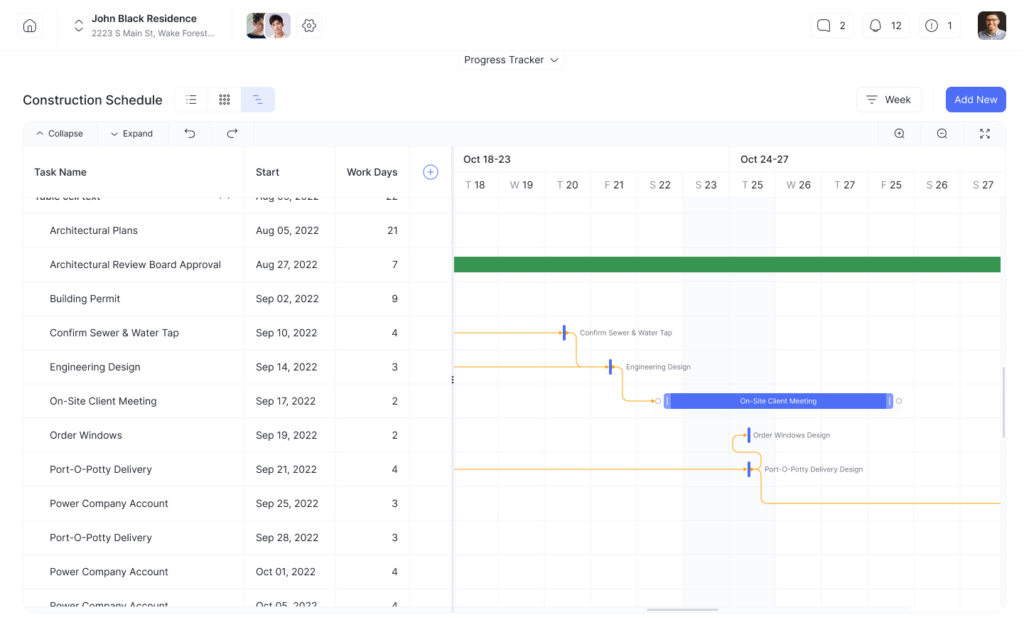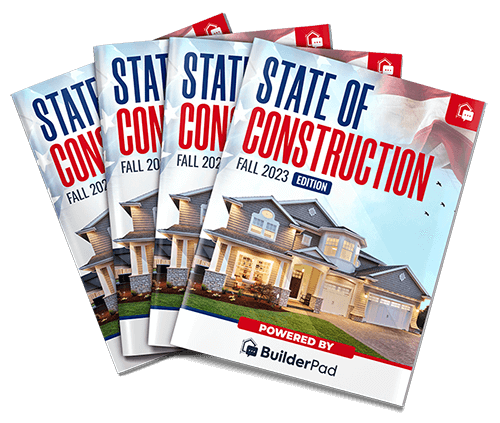Residential construction project management is the process of planning, coordinating, and overseeing a home building or renovation project.
A successful residential construction project not only results in a well-constructed home but is also completed on time, within budget, and to the homeowner’s satisfaction.
With the right approach, potential pitfalls can be navigated seamlessly. The aim is to merge vision with reality in the most efficient manner possible.
1. Foundations of Residential Construction Project Management
Grasping the foundational elements of residential construction project management is paramount.
These foundations lay the groundwork for every subsequent step in the project. Understanding the roles and key principles ensures the entire project flows smoothly.
With a solid foundation, project managers can efficiently address challenges and streamline processes.
1.1. Roles and Responsibilities
- Project Manager: Oversees the project from start to finish, ensuring it stays on track.
- Site Supervisor: Manages daily site operations and workers.
- Contractor: Carries out the construction work.
- Subcontractor: Specialized workers hired by the contractor for specific tasks.
- Architect: Designs the home and may oversee certain aspects of construction.
- Client/Homeowner: Provides input, feedback, and financing.
When setting up BuilderPad, you can use these roles to manage the permissions and notifications:

Understanding these roles is critical to ensuring a cohesive working environment. Clear delineation of duties helps prevent task overlap and misunderstandings.
1.2. Key Principles
- Budgeting: Ensuring the project remains financially feasible.
- Scheduling: Creating and maintaining a timeline.
- Quality Control: Ensuring the project meets agreed-upon standards.
- Communication: Facilitating open and regular dialogue between stakeholders.
These principles act as the backbone of the project, offering a structured approach. Adhering to them guarantees that all aspects of the project are well-balanced and streamlined.
2. Project Initiation

The initiation phase sets the trajectory of the entire project. It’s about aligning expectations, resources, and feasibility.
A well-executed initiation phase can significantly influence the success of the project. It’s about laying the groundwork and ensuring that every stakeholder has clarity on the project’s objectives.
2.1. Needs Assessment
Before any construction begins, understand the homeowner’s needs, desires, and constraints. This will inform the project’s goals and objectives.
A comprehensive needs assessment sets the tone for the project. It helps in aligning the expectations of the homeowner with the capabilities of the team.
2.2. Feasibility Study
Evaluate if the project can be realistically completed given the budget, timeline, and available resources.
This step is crucial in setting realistic expectations. It prevents over-commitment and under-delivery, ensuring stakeholder satisfaction.
3. Planning Phase

A detailed and comprehensive planning phase can be the difference between a project that runs smoothly and one that faces constant hurdles.
Effective planning translates into fewer surprises, better resource allocation, and clearer communication throughout the project’s duration.
One of the integral components of this phase is the use of construction management software. This software can streamline tasks, enhance communication, and provide real-time updates, making the planning process more efficient and effective.
3.1. Project Scope
Define the project’s boundaries, including what will and won’t be included.
A well-defined scope eliminates ambiguities, ensuring that the team and homeowner are on the same page. It acts as a reference point throughout the project.
3.2. Budgeting
Itemize all costs, from materials to labor, and include a contingency fund for unforeseen expenses.
Having a detailed budget ensures financial discipline. It’s a roadmap that guides the spending decisions throughout the project.
3.3. Scheduling
Create a detailed timeline, breaking down tasks, milestones, and deadlines. Timely completion is as essential as the quality of work.
A well-structured schedule ensures that every task is tracked and completed on time.
4. Execution Phase
This is where plans turn into tangible outcomes. The execution phase demands meticulous attention to detail, resource management, and quality control.
Efficient execution ensures that all the groundwork and planning translate into a project that meets or exceeds the homeowner’s expectations. This phase is the heartbeat of the project, dictating its ultimate success.
4.1. Mobilizing Resources
Gather materials, tools, and workforce. Having the right resources at the right time is pivotal for smooth execution.
Proper mobilization ensures there are no unnecessary delays or roadblocks.
4.2. Construction
Follow the architectural plans, building codes, and best practices, ensuring quality at every step. Quality construction results in durable and aesthetically pleasing outcomes.
Adherence to plans and codes ensures that the construction is both safe and up to the mark.
4.3. Quality Assurance
Conduct regular site inspections and resolve issues promptly. Inspections are vital checkpoints in the construction journey.
They ensure that the work aligns with the predefined standards and expectations.
5. Monitoring and Controlling
Continuous oversight is crucial to ensure the project stays on track. Monitoring and controlling allow for real-time adjustments, ensuring alignment with the plan and immediate handling of challenges.
By keeping a close eye on all aspects, from budget to progress, project managers can ensure timely and quality delivery. It’s about proactive management rather than reactive firefighting.
5.1. Progress Tracking
Use tools and software to monitor the project’s progress against the schedule. Regular tracking helps in identifying deviations early. This proactive approach allows for timely interventions and keeps the project on track.
BuilderPad makes it super easy to track the progress and expectations using Gannt charts:

5.2. Budget Monitoring
Track expenditures to ensure the project stays within its financial boundaries. Monitoring finances is critical to prevent overruns. It ensures that the project remains feasible and doesn’t strain the allocated resources.
5.3. Risk Management
Identify potential risks and develop strategies to mitigate them. Every project faces uncertainties. Effective risk management ensures that these uncertainties don’t derail the project, and any negative impacts are minimized.
6. Closing Phase

Concluding a project successfully is as crucial as its initiation and execution. The closing phase signifies the culmination of all efforts and sets the stage for future collaborations and projects.
A successful closing reinforces trust with the homeowner and paves the way for potential future engagements. It’s an opportunity to leave a lasting positive impression.
6.1. Handover
Ensure the homeowner is satisfied, and provide them with any necessary documentation and warranties. A smooth handover is the culmination of all the hard work. Providing comprehensive documentation aids the homeowner in future maintenance and understanding of their new home.
6.2. Post-Construction Review
Evaluate what went well and what could be improved for future projects. Reflection is key to growth. This review acts as a learning tool, helping improve future endeavors.
7. Essential Tools and Software
In today’s digital age, leveraging the right tools and software can greatly enhance project management efficiency. These tools facilitate communication, tracking, and overall management, ensuring that nothing slips through the cracks.
By embracing technological solutions, project managers can free up time for strategic decision-making. Modern tools bring precision, accuracy, and efficiency to the management process.
BuilderPad has an effective toolset allowing you to manage the process effectively:
- Scheduling tools: create visual timelines, assign tasks, and track progress.
- Communication platforms: facilitate discussions, updates, and collaboration.
- Construction management software
BuilderPad enables comprehensive project management, from document storage to real-time collaboration.

This software is tailor-made for construction projects, offering functionalities that streamline tasks and enhance project outcomes.
Conclusion
Residential construction project management is a dynamic and multifaceted domain. With the right principles, tools, and strategies in place, project managers can navigate the complexities, delivering outstanding homes that meet or exceed homeowners’ expectations.
Here are 5 key takeaways from the guide to residential construction project management:
- Clearly define roles and responsibilities of all stakeholders from the start to ensure efficient collaboration.
- Conduct thorough needs assessments and feasibility studies during project initiation to align expectations.
- Create comprehensive plans for scope, budget, and schedule to minimize surprises down the road.
- Closely monitor progress, finances, and risks during execution to enable real-time adjustments.
- Leverage BuilderPad to streamline communication and task management.
Every phase, from initiation to closing, is a piece of the puzzle that, when executed correctly, results in a successful project and a satisfied client.







